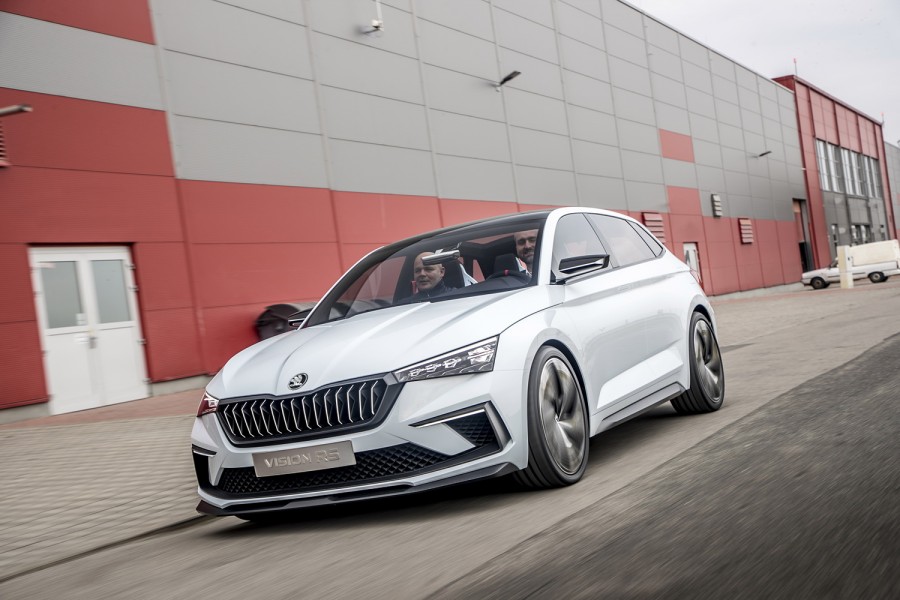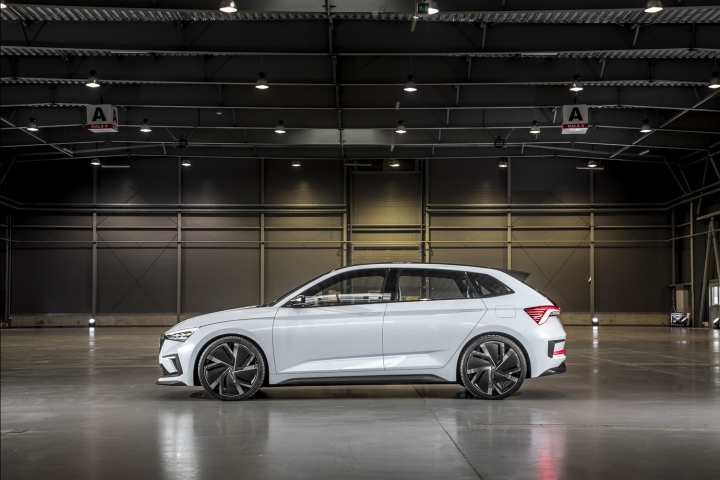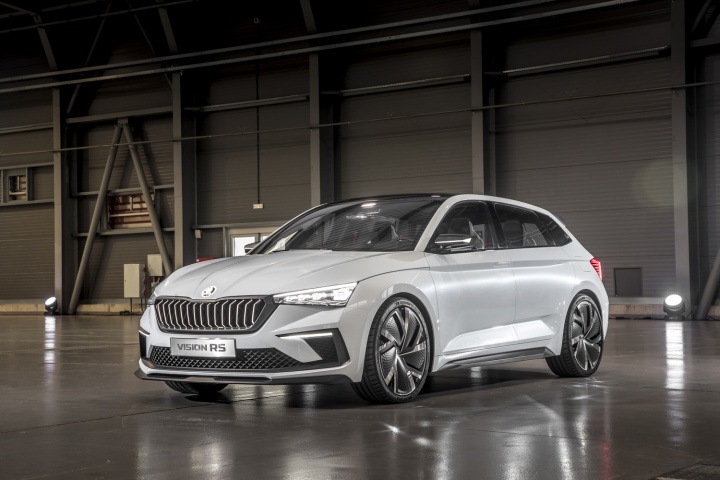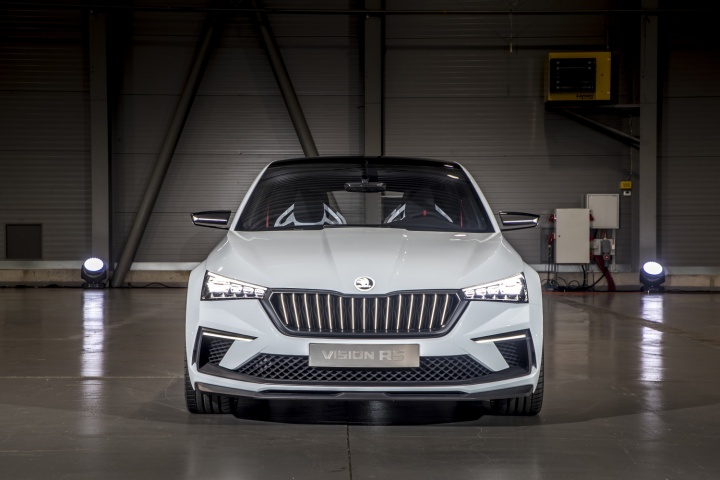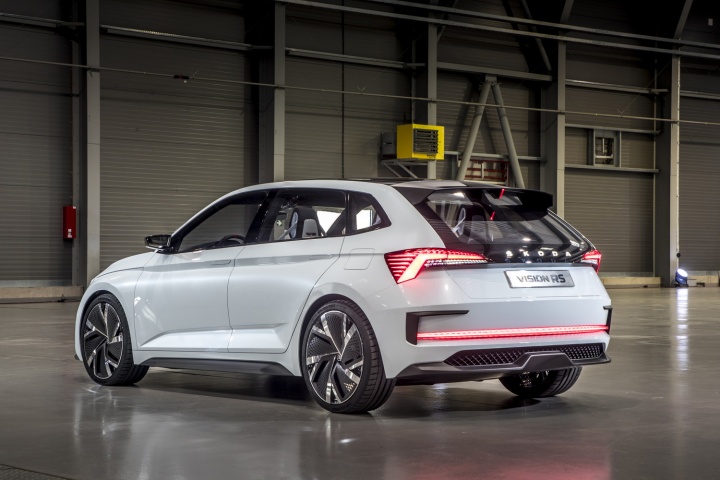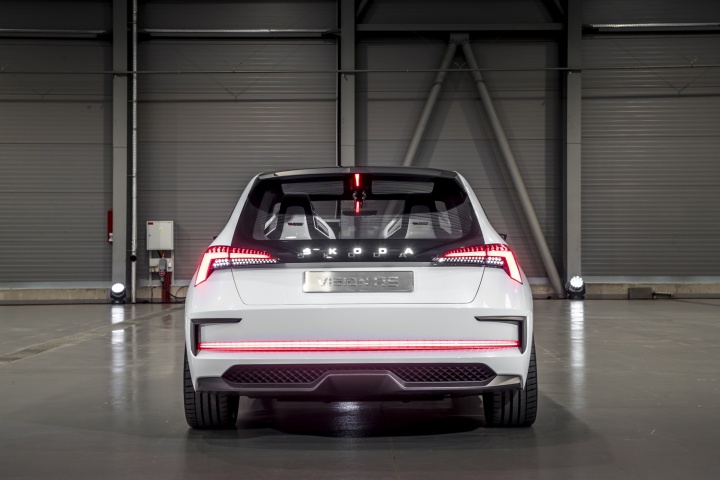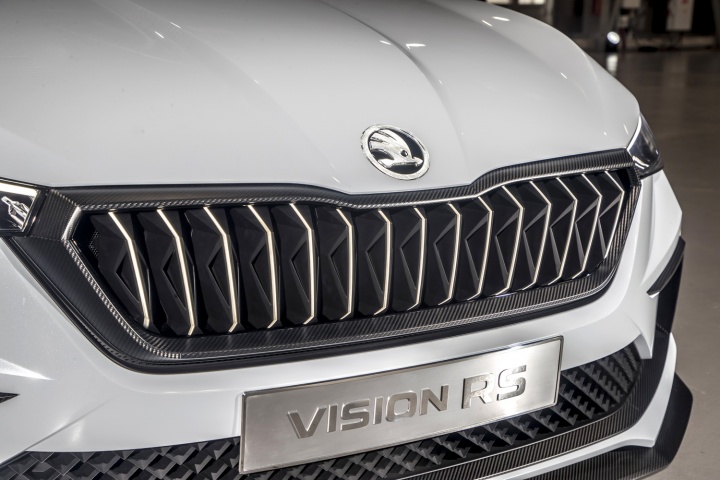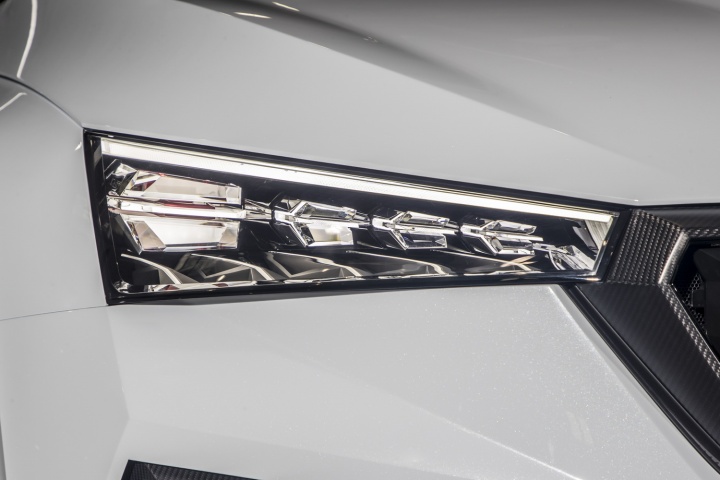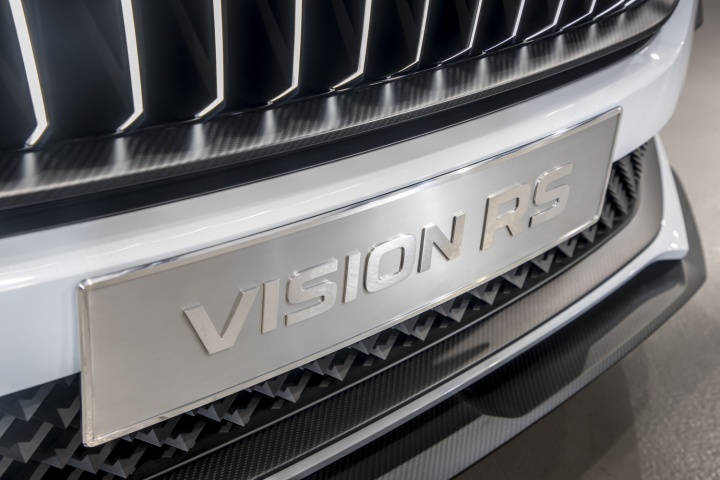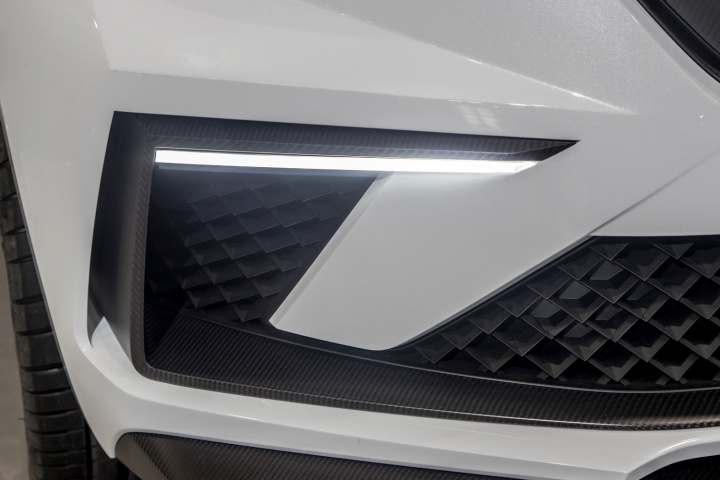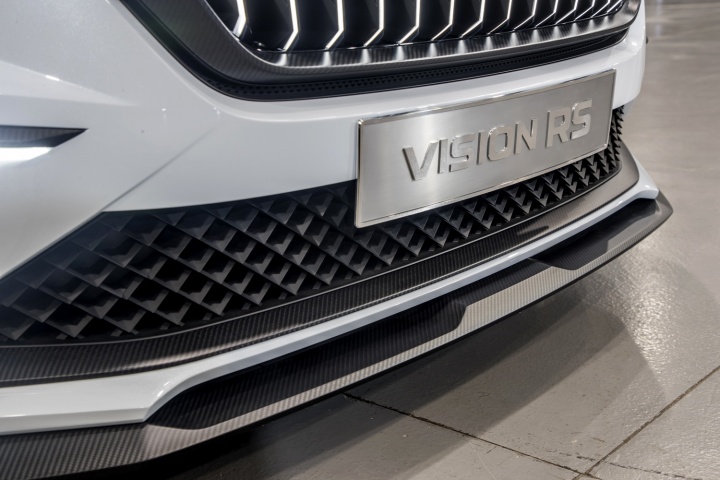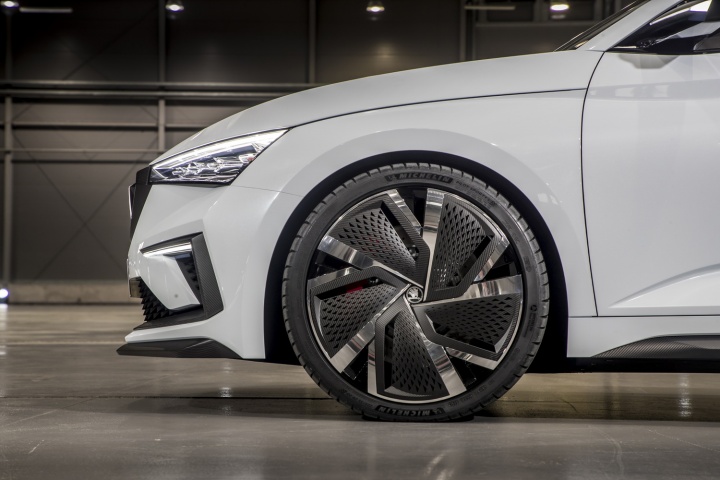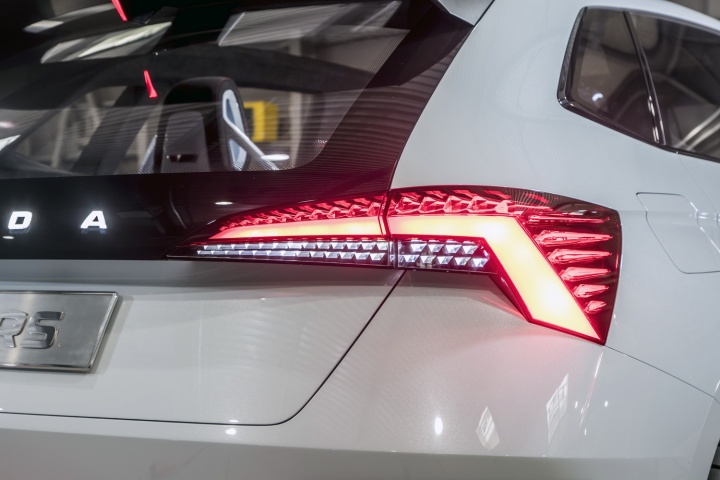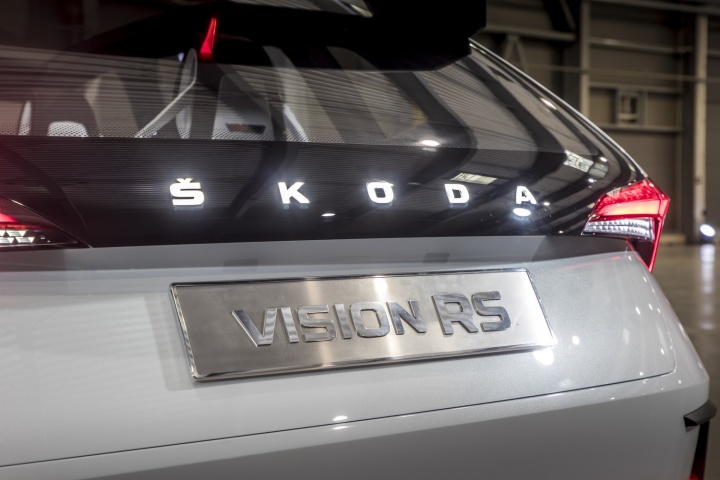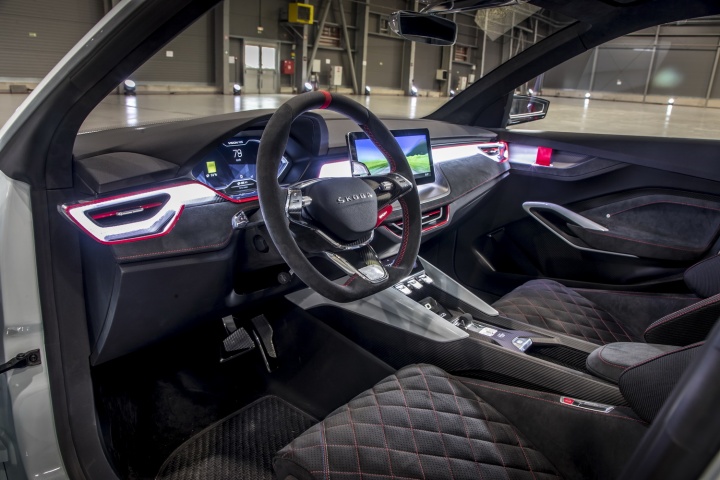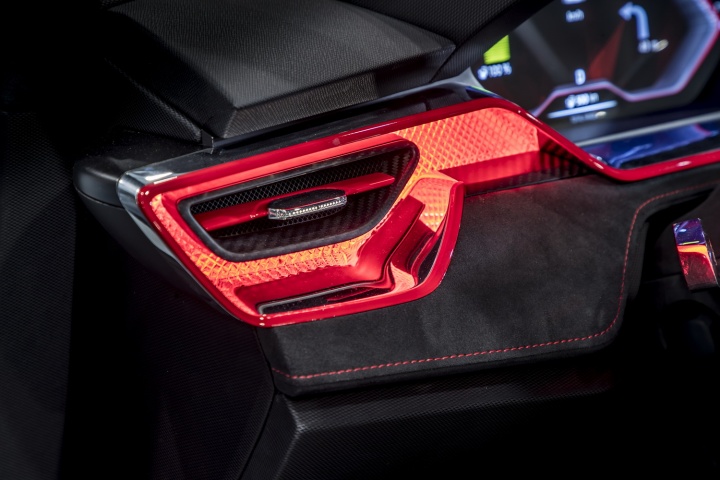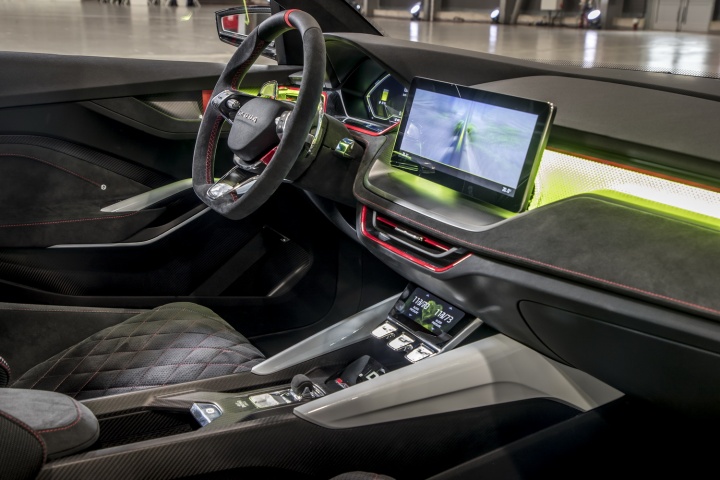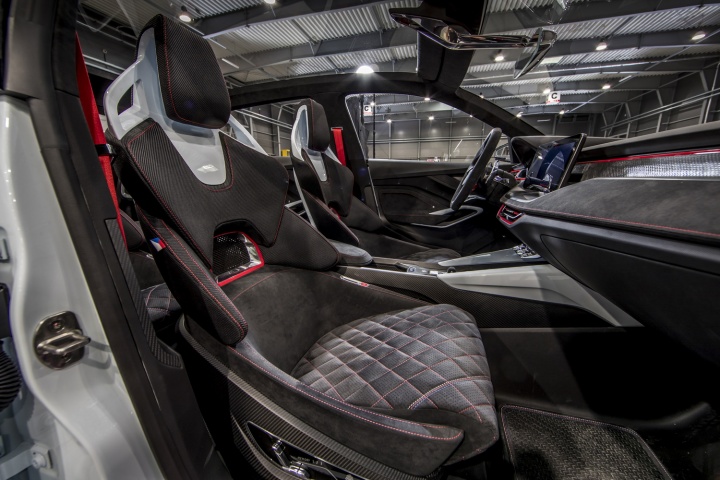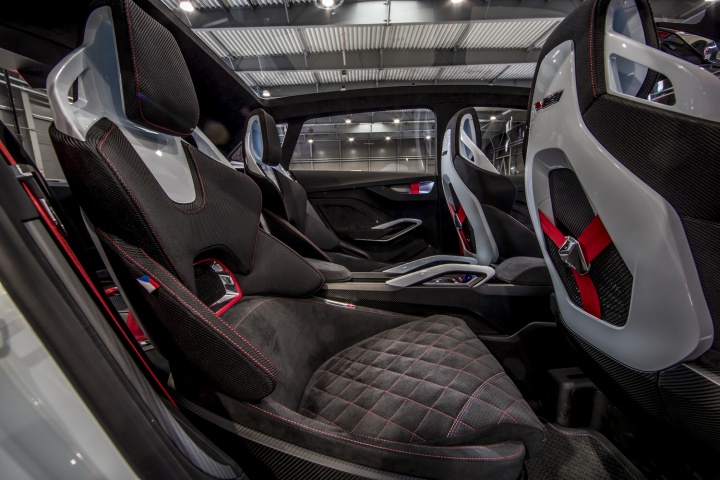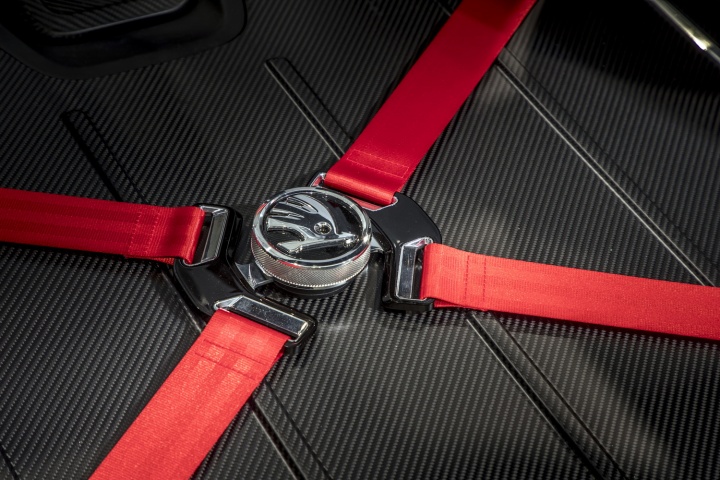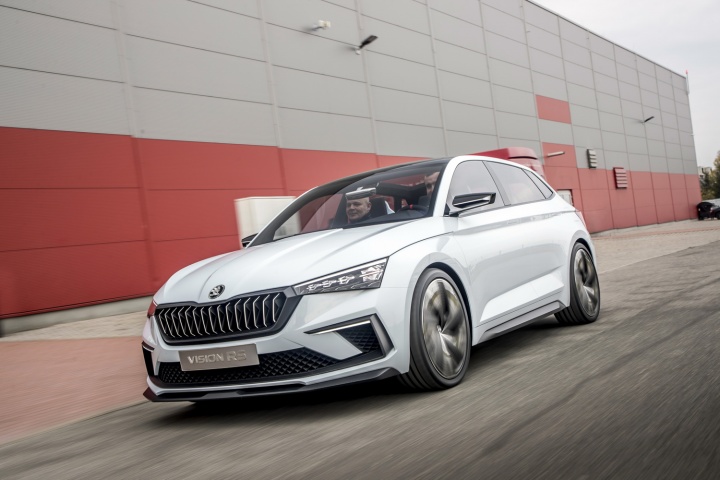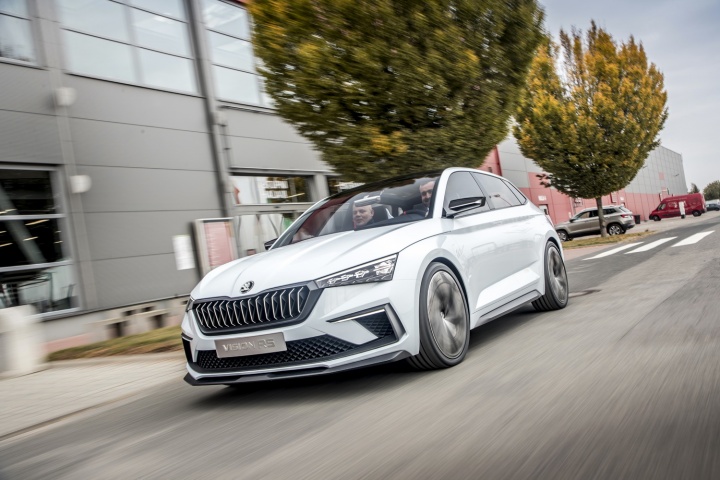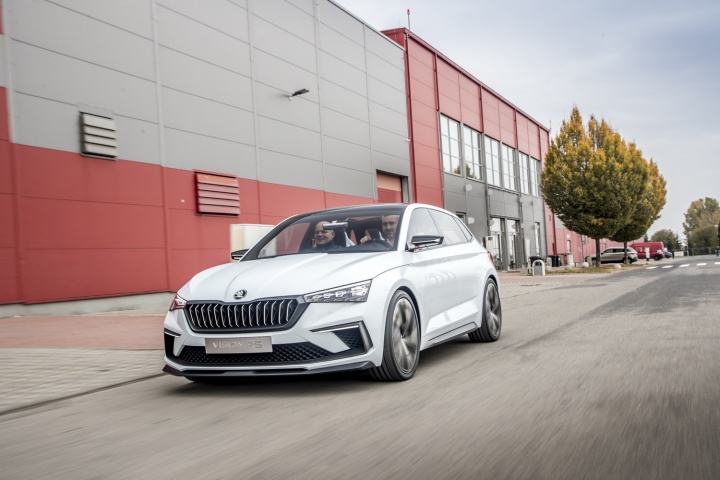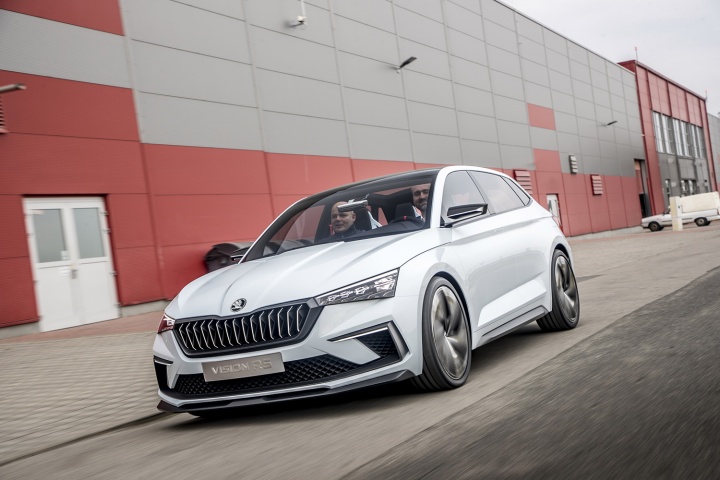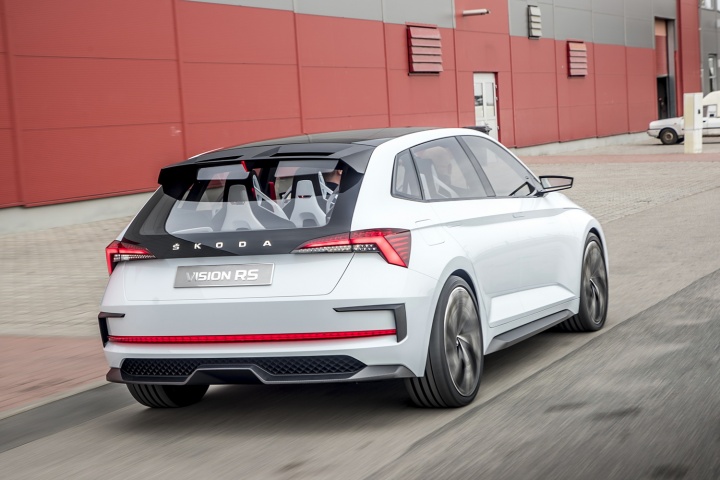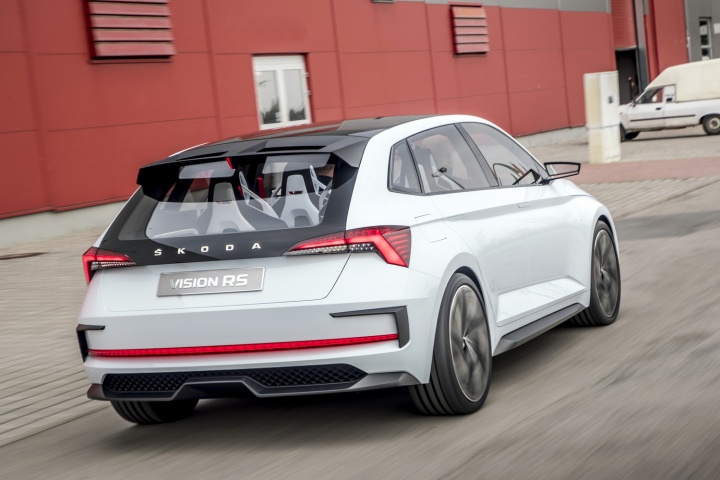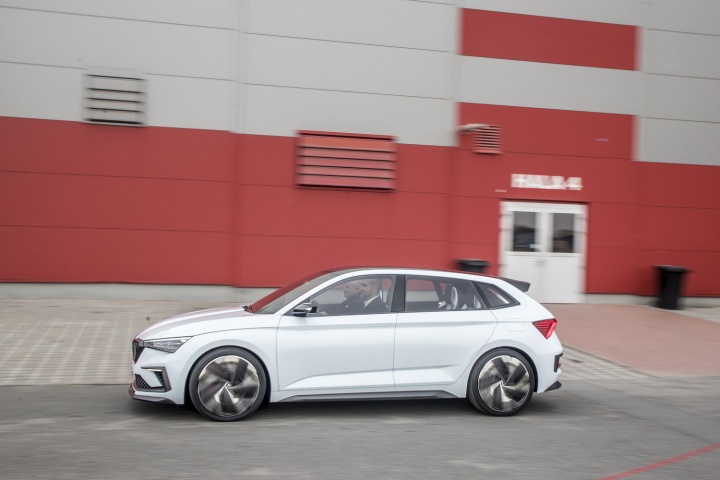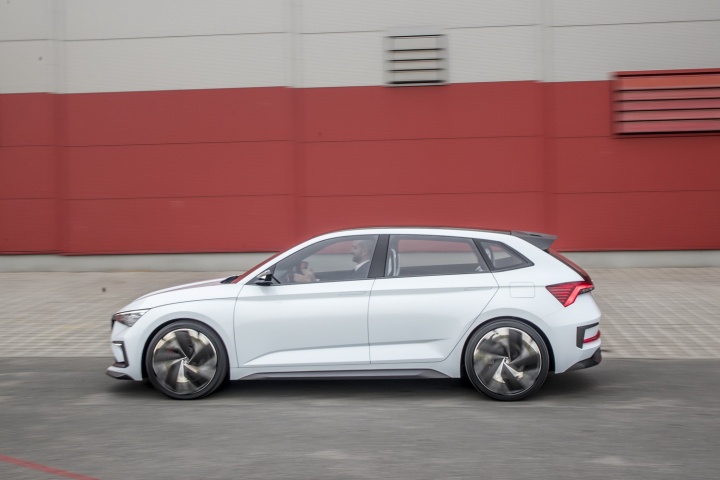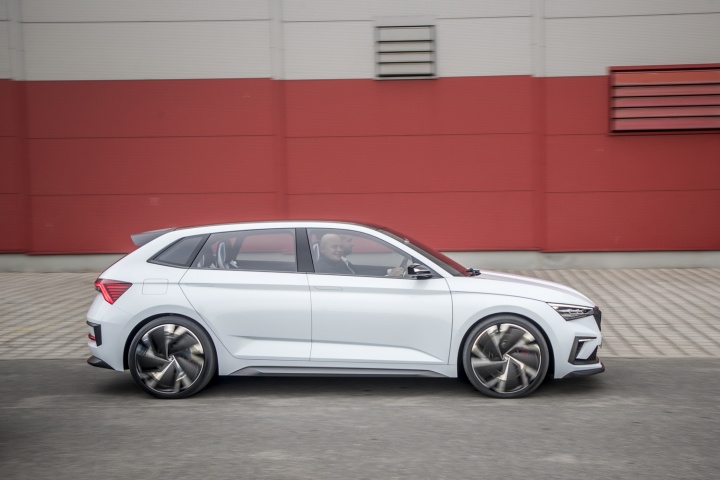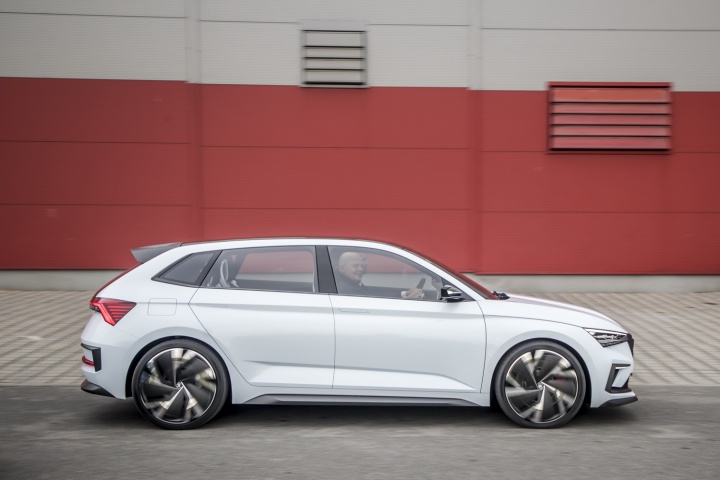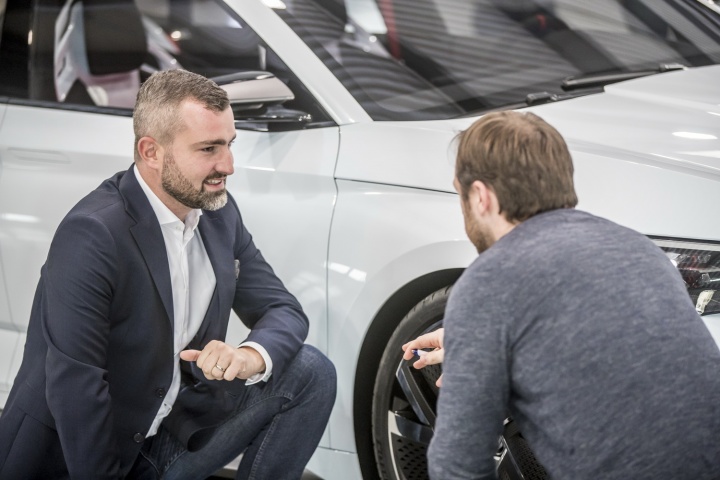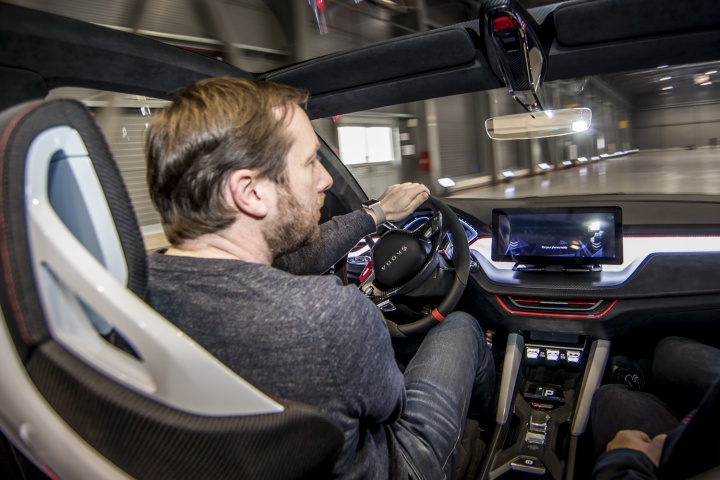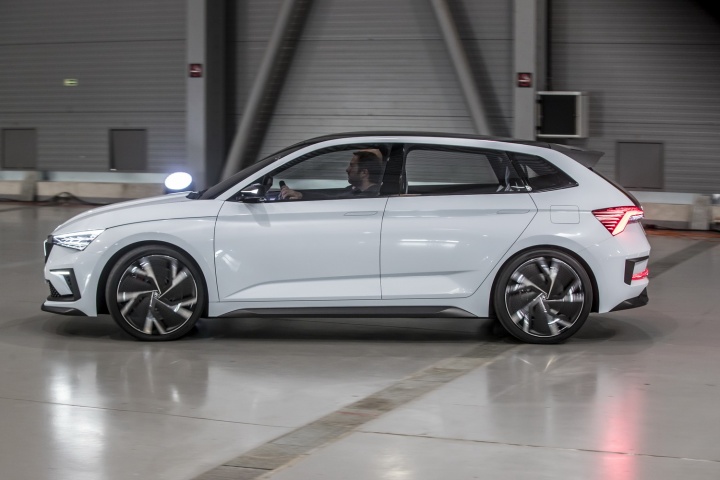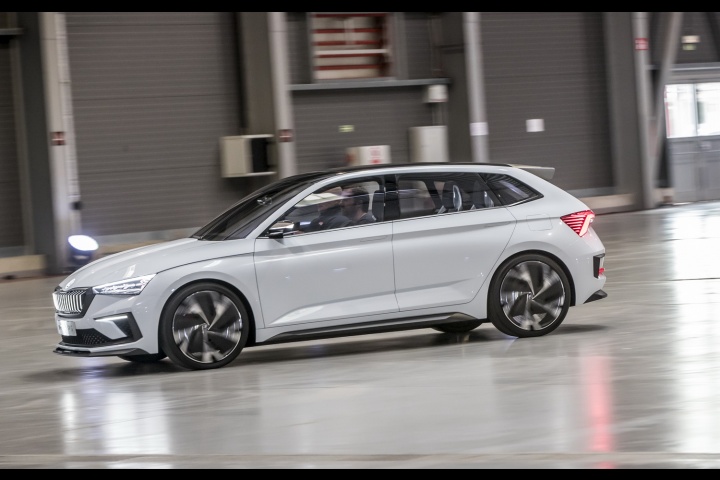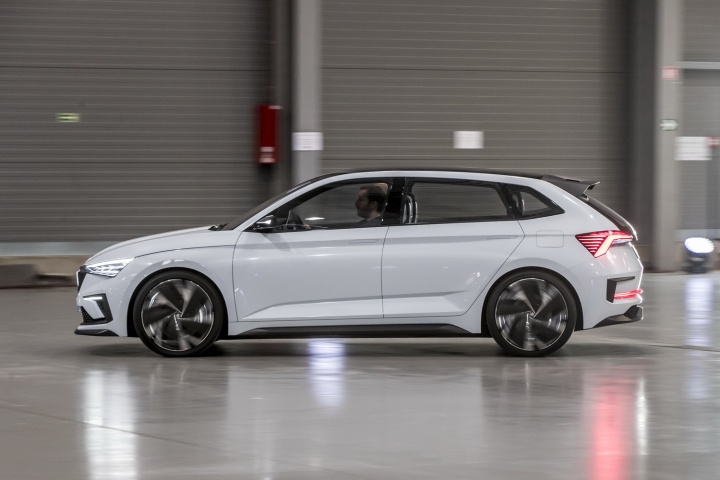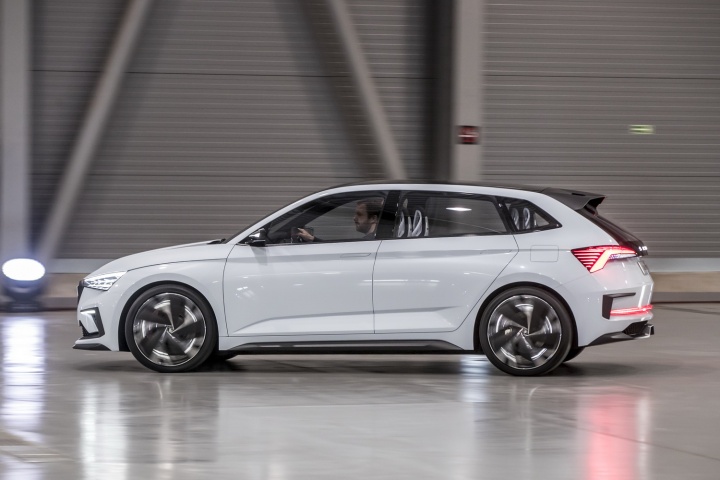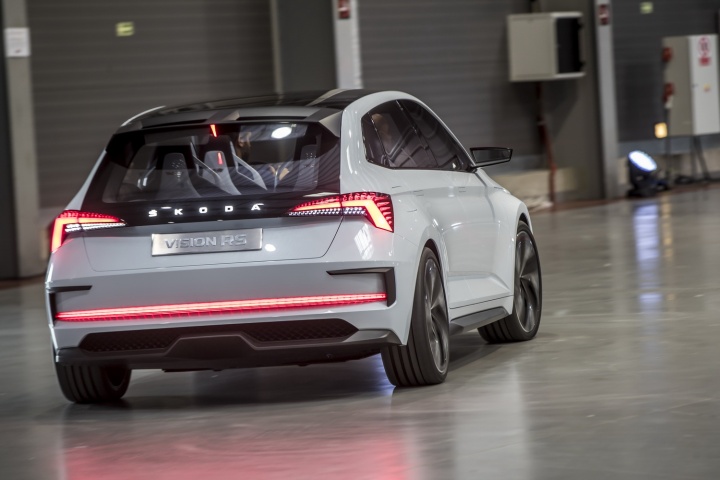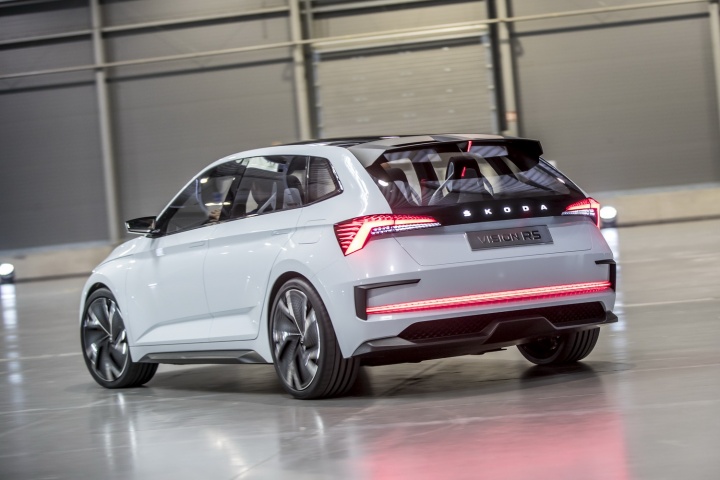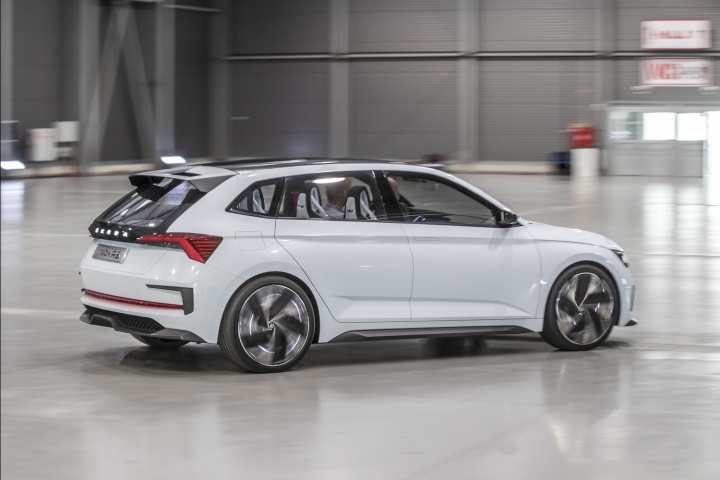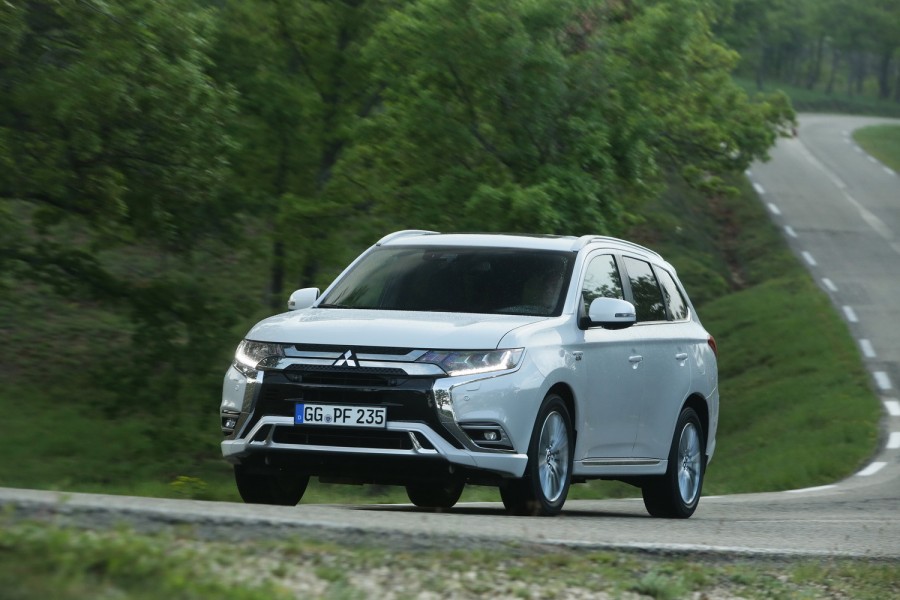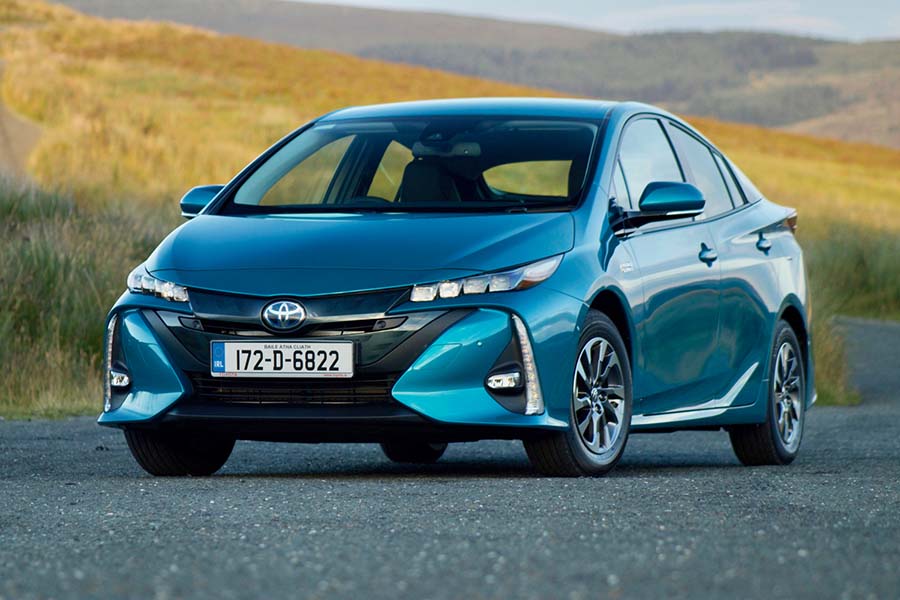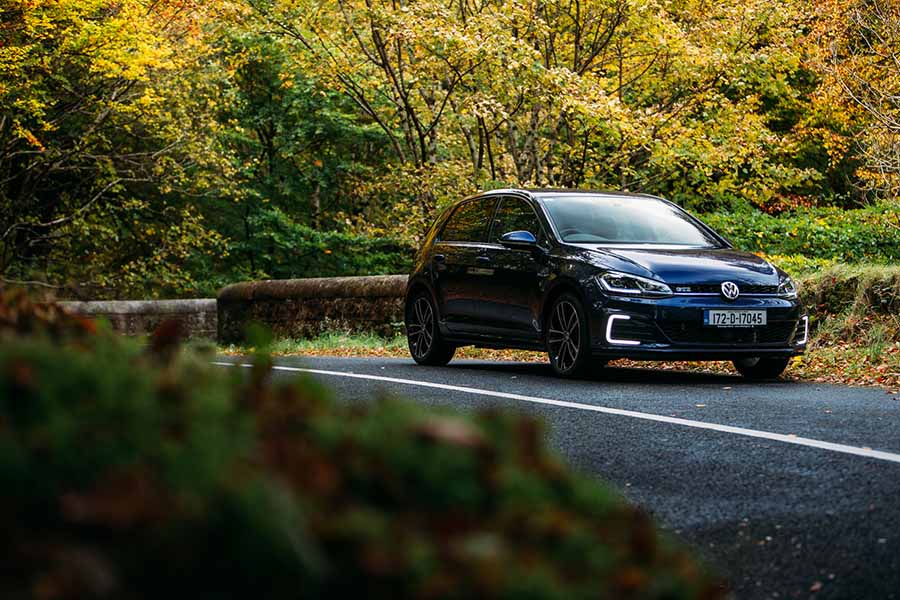It was one of the highlights of the 2018 Paris Motor Show; now we get behind the wheel of the Skoda Vision RS concept car. Not only does it preview the company's new hatchback model, the Scala, the Vision RS also gives us a preview of Skoda's plug-in hybrid powertrain that is set to underpin several models in the coming years.
In the metal
The Skoda Vision RS looks far more realistic than many concept show cars, and for good reason. It previews the brand's Scala hatchback that goes on sale in 2019, set to rival cars like the Kia Ceed, Hyundai i30 and Renault Megane, with range-topping versions likely to tempt Ford Focus buyers.
One of the standout features of the Vision RS is the lighting. As you approach the car, it puts on a welcome display that starts with the illumination of the handmade crystal badge on the bonnet, followed by the leading edges of the fins on the grille. As the light cascades outwards, it continues through the headlights, fog lights and door mirrors, all of which carry thin slivers of bright LED light.
The performance theme carries through to the use of carbon fibre in the grille surround and front splitter. Talking through this part of the car's detail with exterior designer Dalibor Pantůček reveals that we're unlikely to see such carbon fibre parts making an appearance on production Skoda models anytime soon. The high cost doesn't fit in with the brand's value approach and nor does it want to use cheaper looking carbon fibre effect materials.
What we will see on the Scala, and potentially other future Skodas, is aerodynamically optimised bodywork that improves efficiency, such as the air curtain in the leading edge of the front bumper helping to channel air around the front wheels. Shod in 225/35 R20 Michelin tyres, the large wheels on the concept incorporate intricate carbon fibre covers that attach to the alloy spokes and reduce drag. Pantůček talks about how these could make their way into production models in the future, possibly on PHEVs or electric models, though perhaps not made from carbon fibre.
Some interesting design elements at the rear of the car also indicate what we'll see in the Scala. That large sloping glass window on the concept carries the Skoda lettering, with each letter illuminated and with the Skoda name stretching across the rear, there is no longer a need for the brand's badge to be affixed to the tailgate - something we'll see more of on Skoda models in the future. Despite being a performance-themed concept, the designers avoided giving it any visible exhaust pipes, preferring not to overstate its power credentials, as it uses a low-emission plug-in hybrid powertrain.
The interior of the Vision RS is pure concept car stuff and is wonderfully detailed. In front of the driver is a digital instrument cluster just like those now being offered on certain models in the Skoda range. A large 9.2-inch infotainment system appears to float above the centre console and is recessed slightly to conveniently allow you to rest your wrist against the sculpted dashboard as you use it.
All of the materials used in the cabin are animal-free and vegan, while the floor mats are made from a material called Pinatex, which is a textile produced by extracting fibres from pineapple tree leaves. The sports steering wheel feels great in hand and has some neat touches like a pared back three-spoke design with knurled rotary buttons extending from each side and a large red 'Sport' button for delivering maximum power.
Just four individual sports seats make up the interior, with light flooding in from the full-length panoramic glass roof. The centre console extends the length of the cabin to also divide the rear seats and, in the back, it features a small screen that can display driving information such as the car's speed.
Driving it
Under the skin of the Vision RS is a new plug-in hybrid system, using a 1.5-litre turbocharged four-cylinder petrol engine supplemented by a 102hp electric motor, fed by a 13kWh lithium-ion battery. In total, the system produces 245hp and Skoda says the Vision RS is capable of a 0-100km/h time of 7.1 seconds. More interestingly for the electric element of the drivetrain, Skoda claims that it can deliver a battery-only driving range of 70 kilometres. The battery takes 2.5 hours to recharge using a household charger. The car is also capable of energy recuperation on the move, and different modes allow the driver to store the state of battery charge until a preferred time if required.
Due to it being a concept car, and the fact that is was being shipped straight to Australia following our drive, time was limited and confined to a large warehouse on the outskirts of Prague. Unlike some concept cars that are built just for show, the Vision RS felt solidly built and despite an imposed speed limit, didn't seem lacking in acceleration. The limitations of our driving area didn't give much of an opportunity to test out the powertrain so we'll have to wait until sometime in 2019 to sample that when it makes its first appearance in production guise in the updated Skoda Superb.
Sadly, there are no plans to produce a Scala RS on the horizon, and while Skoda senior management will never say never, it is unlikely. One of the reasons is that, when the Scala enters production, it will use a version of the MQB A0 platform, which is limited to engines up to 150hp.
What you get for your money
The Vision RS concept is a tale of two products. Its striking design previews the Scala model and, having been granted an early glimpse of the production version, we can confirm that the two are indeed very similar.
Perhaps more interesting is the prospect of Skoda's plug-in hybrid powertrain, which is set to first appear in the updated Superb that will debut in the first quarter of 2019. With a claimed electric driving range of 70 kilometres and a combined power output of 245hp and, possibly even more depending on which version of the turbocharged four-cylinder engine is used, it should prove to be an enticing proposition.
Summary
With only the briefest of time spent driving the Skoda Vision RS concept car, it's impossible for us to say just how its plug-in hybrid powertrain stacks up. But Skoda is keeping a realistic approach to how it can be used to deliver sufficient levels of power while maintaining low emissions and extending the battery-only driving range - a critical factor in the success of future PHEVs.

